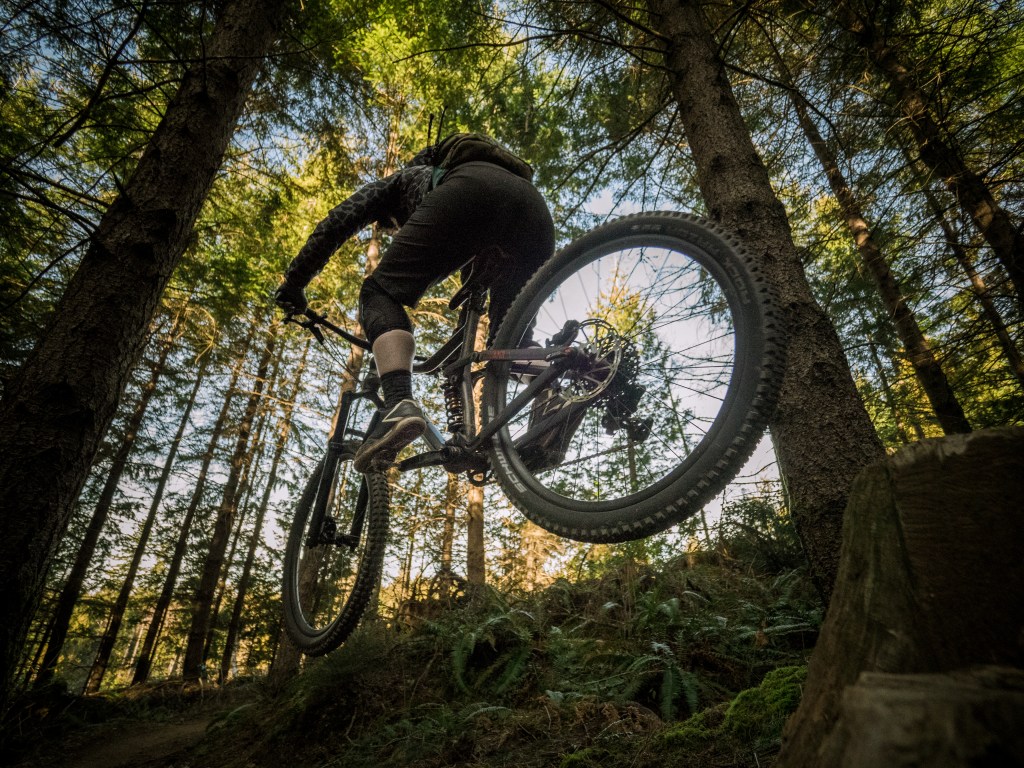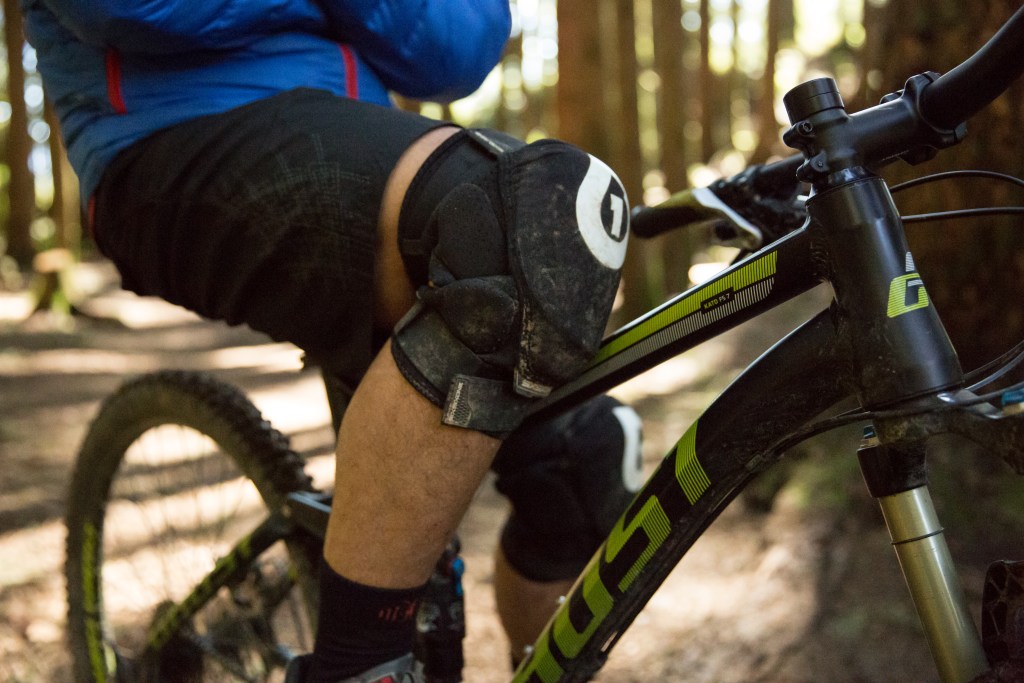One of the best things about the co-op is the thriving community of gearheads, dirtbags, bird nerds, thru-hikers, peak-baggers, storytellers and more who work in our stores and headquarters, guide our trips and teach our classes. In this series, we’ll tap into that expert knowledge to answer some of your burning questions about terrain, gear, safety, etiquette—anything! The co-op has your back.
Esther Sumner, an REI member since 2002 and longtime mountain biker, often gets asked this week’s question: What’s the deal with clipless pedals?
No doubt you’ve seen mountain bikers, commuters and spandex-clad roadies clipping their cycling shoes in and out of their pedals. They start pedaling. Clip. They come to a stop. Unclip. They start rolling again. Clip. If you haven’t tried these clipless pedals, you might be wondering what all the clipping is about. And, surely you’re questioning why they’re called clipless pedals when clearly everyone seems to be clipping in and out of them. To get some answers, I turned to Cindy Abbott, an REI Outdoor School Senior Instructor, professional mountain biker and clipless-pedal aficionada located in Austin, Texas.
First and foremost, I asked Cindy perhaps the most perplexing question about clipless pedals: What’s with the confusing name? She sat me down for a brief history lesson to clear things up.
Back in the day, many serious cyclists used flat pedals with these things called toe clips on them. Toe clips are basically metal or plastic baskets that wrap around the toes of your shoes to secure your feet to the pedals. Fast forward to 1984, when a French ski-binding company called Look carved its way into the cycling scene with the first widely available road bike pedals that connected to riders’ feet without the characteristic toe clips, making them, in fact, clipless. The name stuck and, like it or not, that’s what we call them now.

Why Ride with Clipless Pedals?
New riders are often curious about why they should consider switching from the basic flat pedals that come on many bikes to clipless pedals. The quick answer is efficiency.
“With a clipless pedal you get the push of the down and the pull of the up. On flat pedals, you just push down—you don’t have the pull up,” said Cindy. She explains that with flat pedals you’re relying primarily on your quads to power the bike, but with clipless pedals you engage your quads and hamstrings when you push down and pull up, which spreads the work across the two muscle groups and makes your pedaling more efficient.
Another plus to the clipless design is that they help keep your feet on the pedals when riding over rough terrain. If your foot gets tossed off a flat pedal when you’re cranking hard to get up a steep hill, you could miss a pedal stroke or two and grind to a halt.

Switching to Clipless Pedals
Cindy made the switch to clipless pedals after only a few rides on flat pedals and she hasn’t gone back. She uses them for all her riding, whether that’s cruising through Austin to get to work or charging down a trail. Though she thinks most riders will benefit from going clipless, Cindy offers this advice to new riders: “I actually suggest starting out with flat pedals, getting a feel for the bike, getting comfortable and then maybe after a season or a few months of riding move to a clipless pedal.”
When you start shopping around for your first set of clipless pedals, know that there are styles specific to the type of riding that you do (e.g. mountain, road, etc.). Also, while all clipless pedals, whether for mountain or road, feature the same basic two-part system made up of a plastic or metal cleat on the bottom of your shoe that snaps into a spring-loaded mechanism on the pedal, not all cleats work with all pedals, so be sure to buy the correct combo.

Learning to Ride with Clipless Pedals
Okay, so let’s say you’ve got the clipless pedals, cleats and shoes and you’re ready to ride away. Now what?
“When you’re learning to use clipless pedals you have to be super humble because you’re going to fall,” said Cindy.
It’s true; there is a decent chance you’ll take a tumble at some point while using clipless pedals. Many experienced riders have a story to tell about tipping over at a stoplight with throngs of onlookers standing around. Rather than fear this inevitable encounter with the ground, try to think of it as a rite of passage on the route to becoming a thriving cyclist.
To avert injury when learning, Cindy recommends practicing in a spot where the consequences are low, like a big grassy field. You can ride around slowly, stomping your feet down on the pedals to clip in and pivoting your heels outward to unclip, and if you tip over, you’ll be lying in a field of soft grass.
When you fall, try to roll onto the back of your shoulder rather than reaching out a hand to catch your fall. This probably won’t be your natural instinct, but doing so can help prevent injuries to your hands and wrists.
Of course, you didn’t buy clipless pedals to spend all your time riding around (or lying) in fields, so after a couple hours of that and when you’re getting comfortable with clipping in and out, Cindy says to take your skills to a mellow section of road or trail where you can continue to work on the new skill. For mountain bikers, Cindy recommends wearing knee and elbow pads and starting on a flat section of trail.
The key to getting really comfortable with clipless pedals is repetition. With enough practice, you’ll eventually develop the muscle memory for clipping in and clipping out and you won’t even have to think about it. It will just happen.
Meet the Expert
Cindy Abbott is a Senior Instructor for REI Outdoor School in Austin, Texas. Aside from being a pro-level mountain bike racer and USA Cycling XC series national champion, she is a professionally certified International Mountain Bike Association Level 2 mountain bike instructor and a professionally certified rock climbing instructor. She also coaches a high school mountain bike team and is the Director of Ride Like a Girl, Austin’s free mountain bike instructional program for women.
